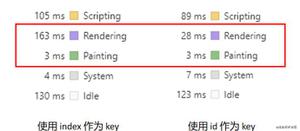在UWP应用程序中实现可拆卸面板
我在网格中有一个Image,我通过将图像源设置为WritableBitmap并更新位图来显示一些自定义内容。我想要做的是实现一个“分离”按钮,将我的图像放在一个单独的窗口允许用户将其移动到不同的屏幕,调整大小等独立于我的主要应用程序窗口。如果新窗口关闭,我想将它恢复到原来的位置。当图像位于新窗口中时,我想通过更新源位图来持续更新新内容(就像它在分离之前一样)。在UWP应用程序中实现可拆卸面板
我最初认为我可以创建一个新窗口,并通过首先将其从原始父项中移除,然后将其作为子项添加到新窗口中的布局中,从而“移动”我的图像控件。我用下面的代码:
CoreApplicationView^ newCoreView = CoreApplication::CreateNewView(); int mainViewId = Windows::UI::ViewManagement::ApplicationView::GetApplicationViewIdForWindow(
CoreApplication::MainView->CoreWindow);
uint indexOfObjectToDetach = -1;
bool found = originalGrid->Children->IndexOf(imageToMove, &indexOfObjectToDetach);
if(found)
{
myGrid->Children->RemoveAt(indexOfObjectToDetach);
}
DispatchedHandler^ dispatchHandler = ref new DispatchedHandler([this, mainViewId]()
{
newView_ = Windows::UI::ViewManagement::ApplicationView::GetForCurrentView();
Windows::UI::Xaml::Controls::StackPanel^ newWindowGrid = ref new Windows::UI::Xaml::Controls::StackPanel();
Window::Current->Content = newWindowGrid;
Window::Current->Activate();
newWindowGrid->Children->Append(imageToMove); // Add to new parent
});
create_task(newCoreView->Dispatcher->RunAsync(Windows::UI::Core::CoreDispatcherPriority::Normal, dispatchHandler)).then([this, mainViewId]()
{
auto a = newView_->Id;
create_task(ApplicationViewSwitcher::TryShowAsStandaloneAsync(a, ViewSizePreference::Default, mainViewId, ViewSizePreference::Default));
});
但是在我的图像添加到其新的父行,我得到一个Interface was marshalled for a different thread错误。更多阅读时,这是由于每个新窗口都在自己的线程中,而我正在将对象移动到另一个线程。
我是UWP的新手,我不确定如何实现此UI行为。我如何在一个视图中访问/转移状态到另一个视图?
回答:
问题的确是,UWP中的每个应用程序视图都有自己的线程和自己的UI调度程序。当你创建一个控件时,它被绑定到它创建的UI线程上,因此你不能把它放到另一个应用程序视图上。
解决方案是在新视图的UI线程内创建StackPanel旁边的新Image。我真的不使用C++,但在C#如下我会实现它:
await newCoreView.Dispatcher.RunAsync(CoreDispatcherPriority.Normal,() => {
StackPanel panel = new StackPanel();
Image image = new Image();
panel.Children.Add(panel);
image.Source = ...; //your source
Window.Current.Content = frame;
Window.Current.Activate();
newViewId = ApplicationView.GetForCurrentView().Id;
});
为了进一步澄清 - 你可以安全地“转移”正常的数据类型转换成另一种观点,问题主要是与用户界面 - 捆绑类型如控件,页面等。
以上是 在UWP应用程序中实现可拆卸面板 的全部内容, 来源链接: utcz.com/qa/259820.html




